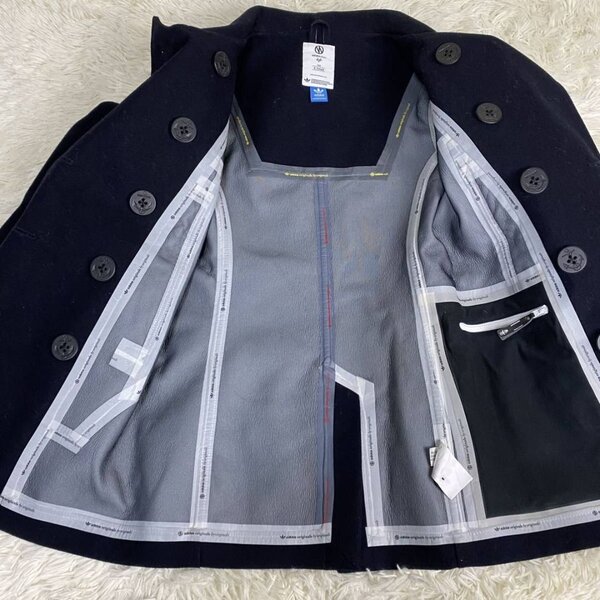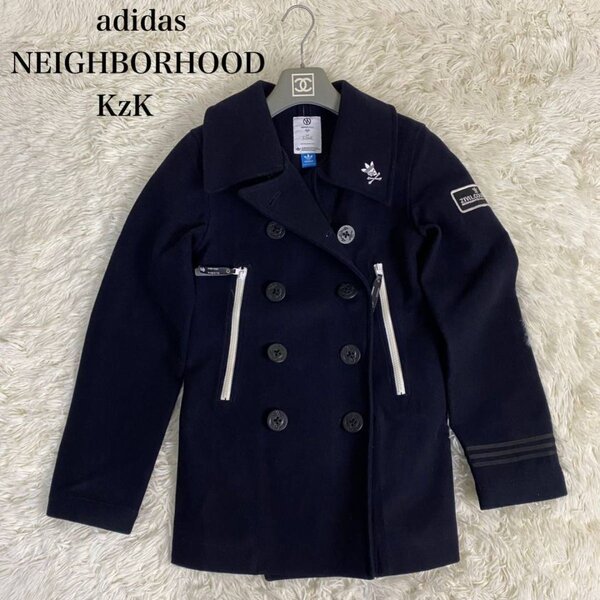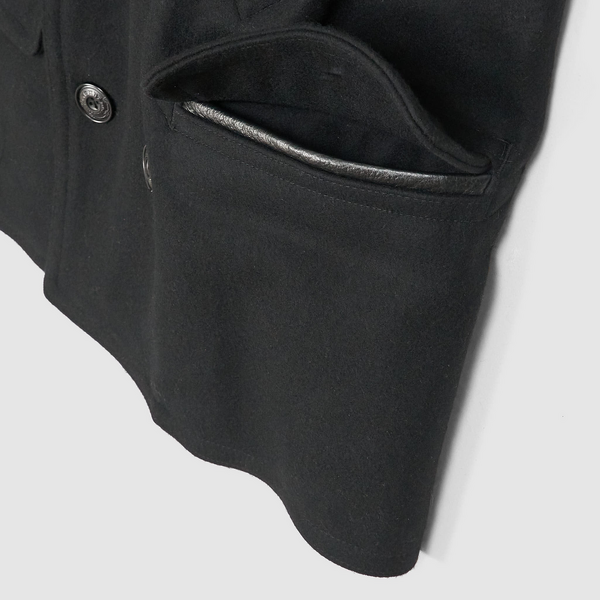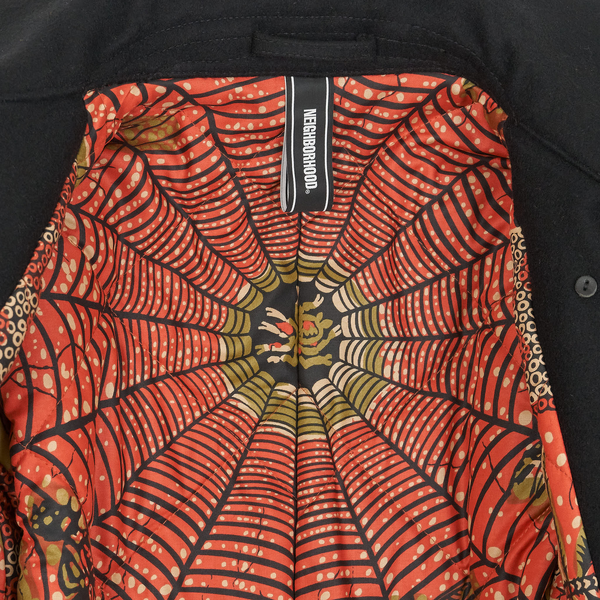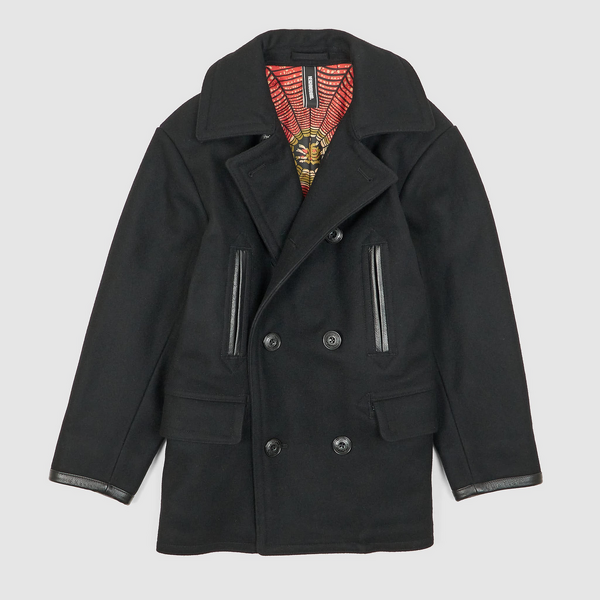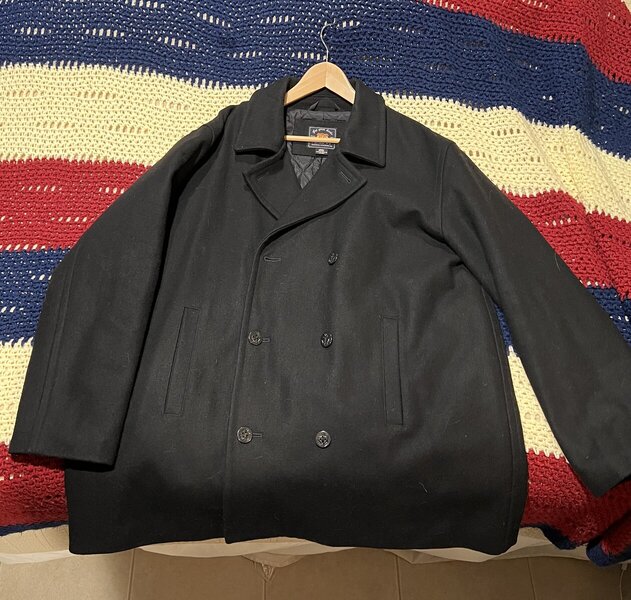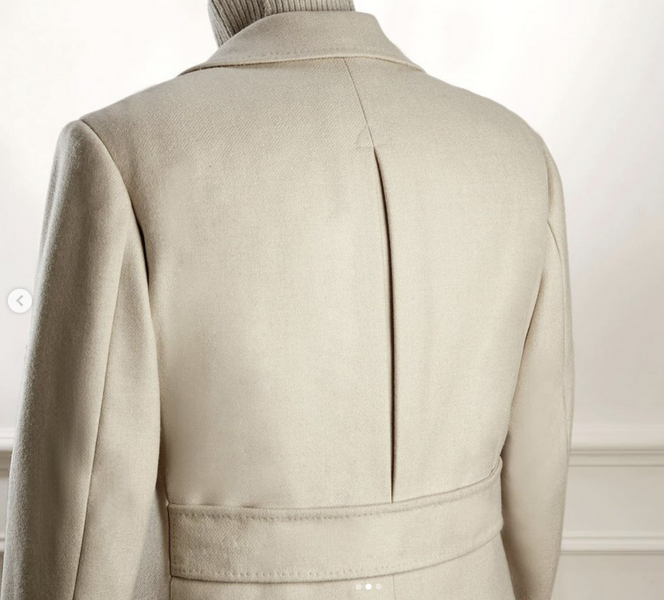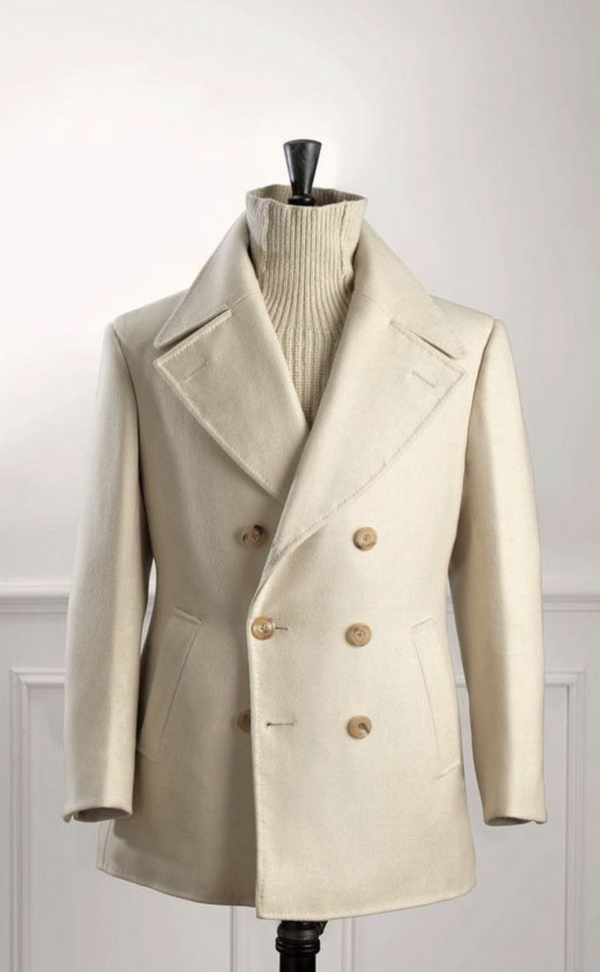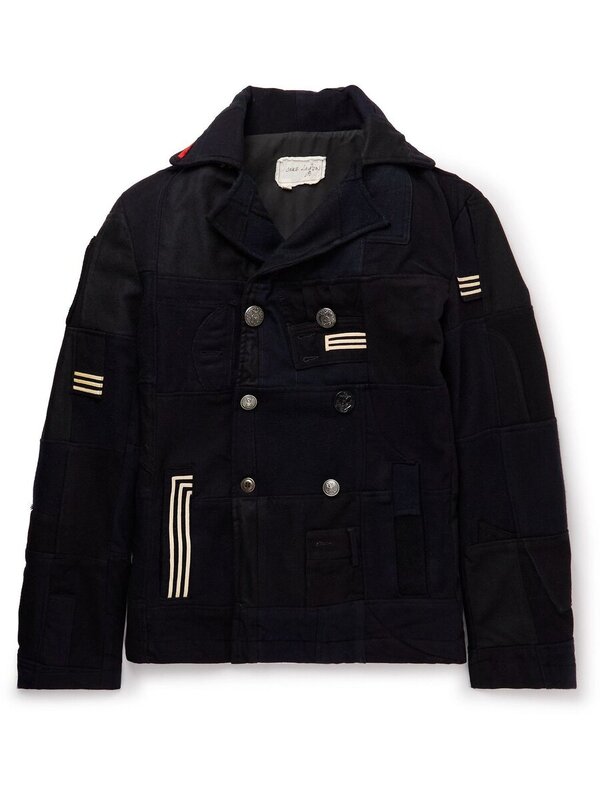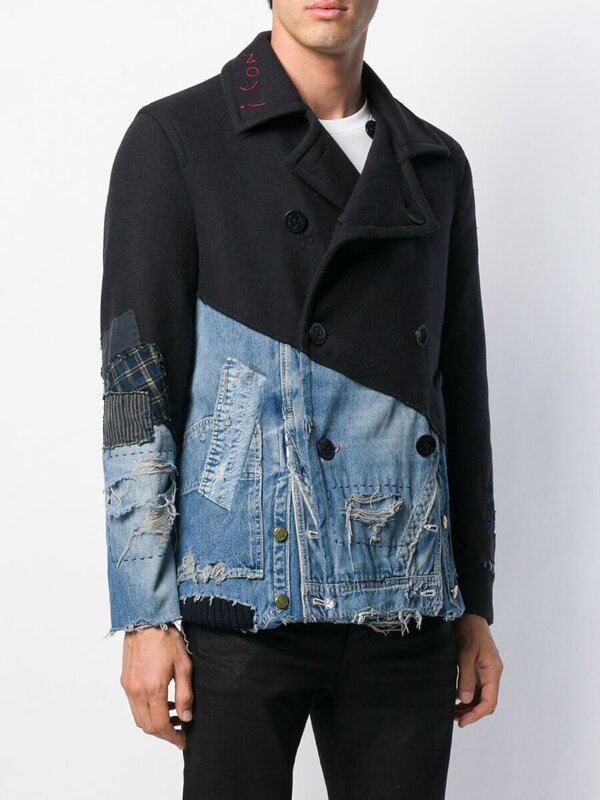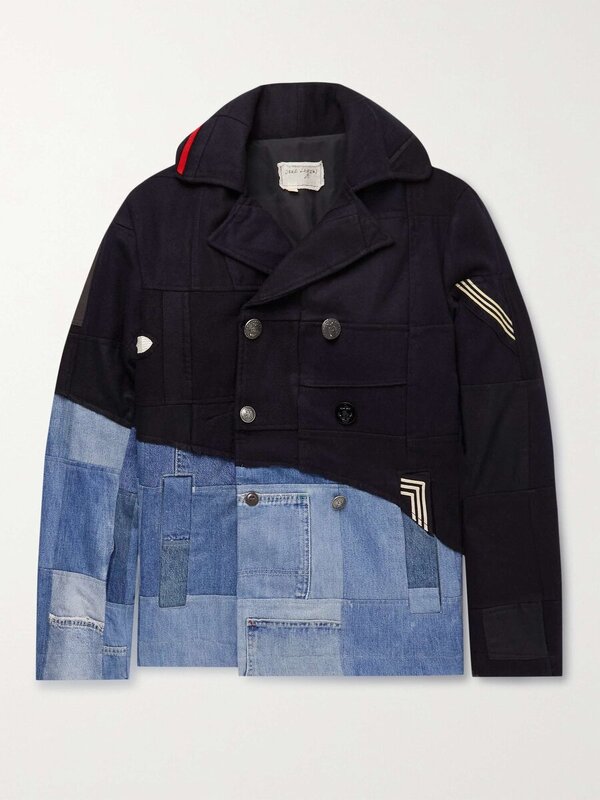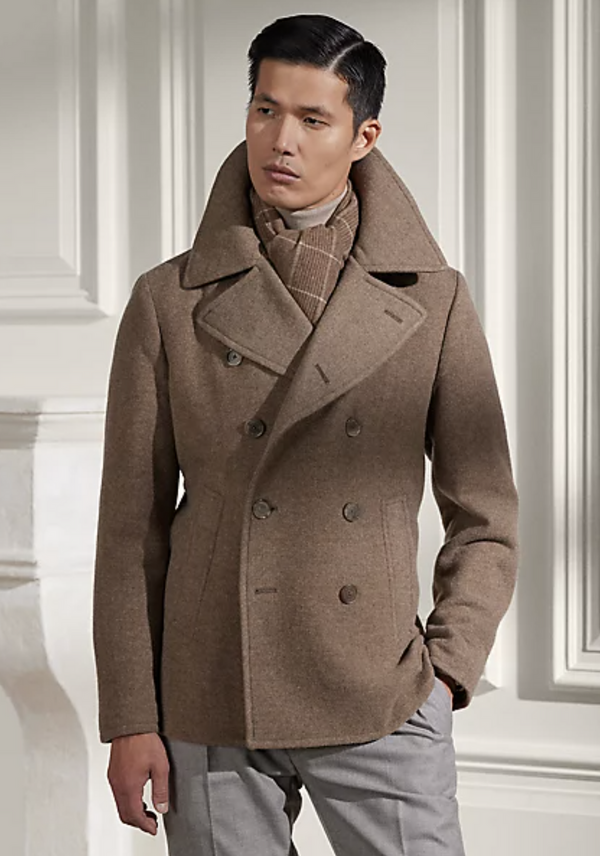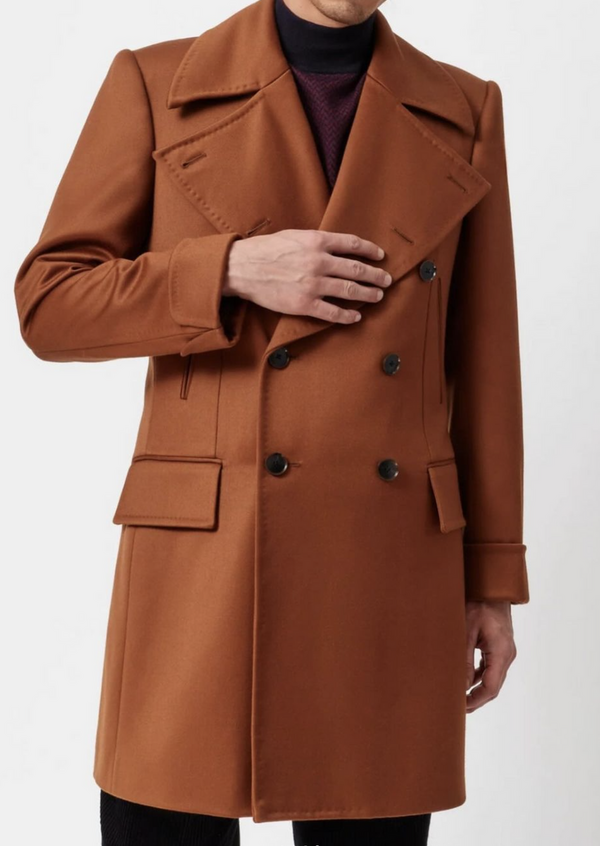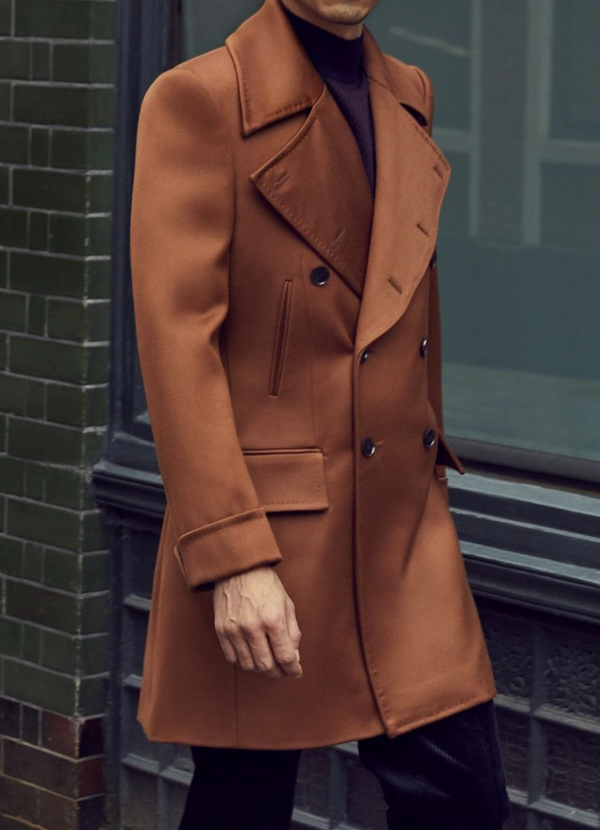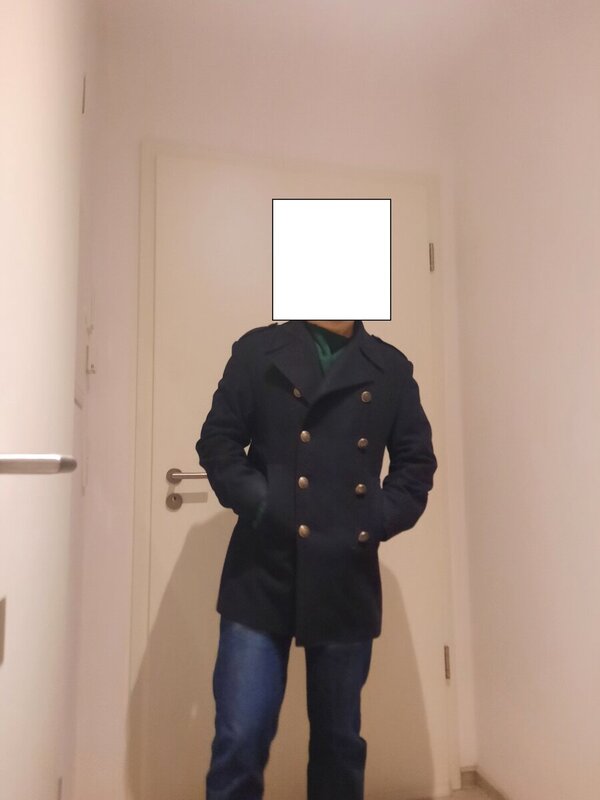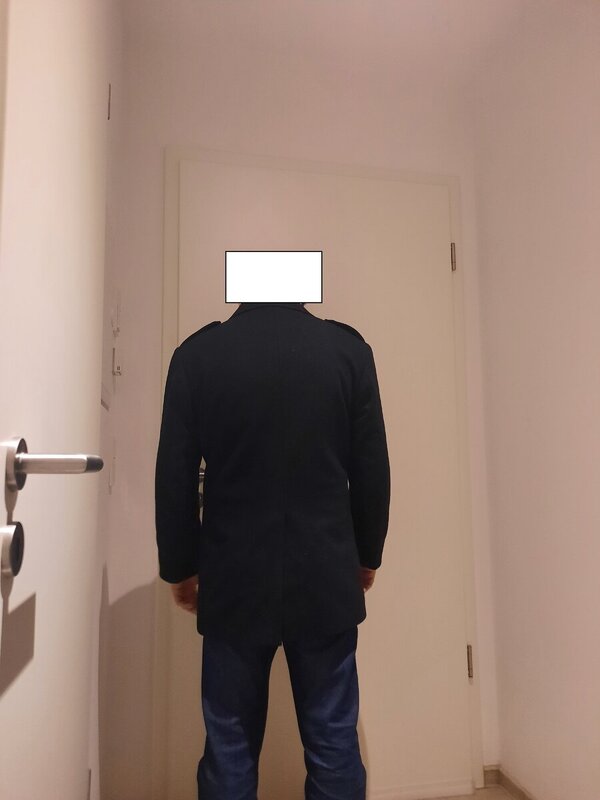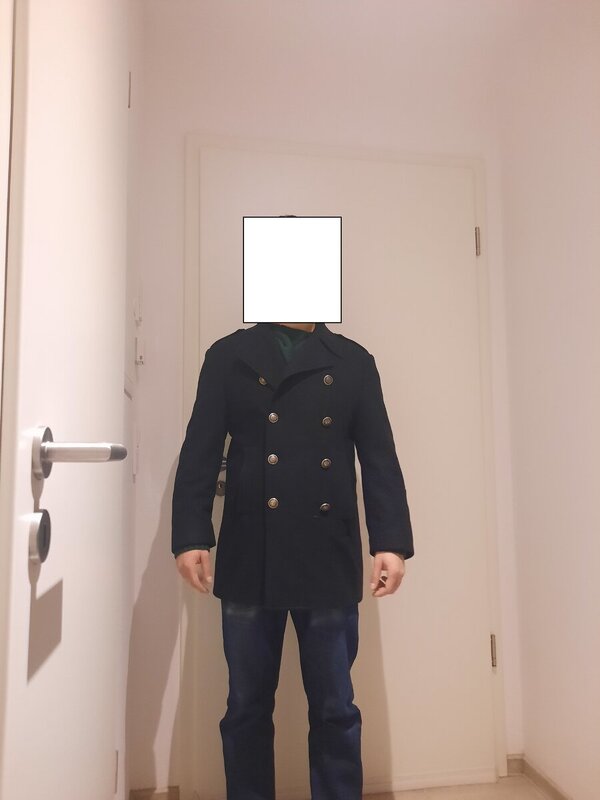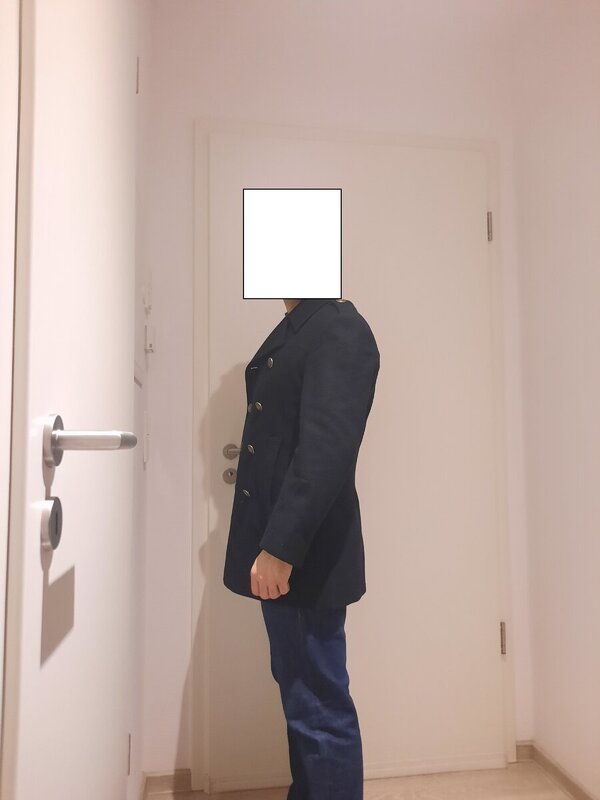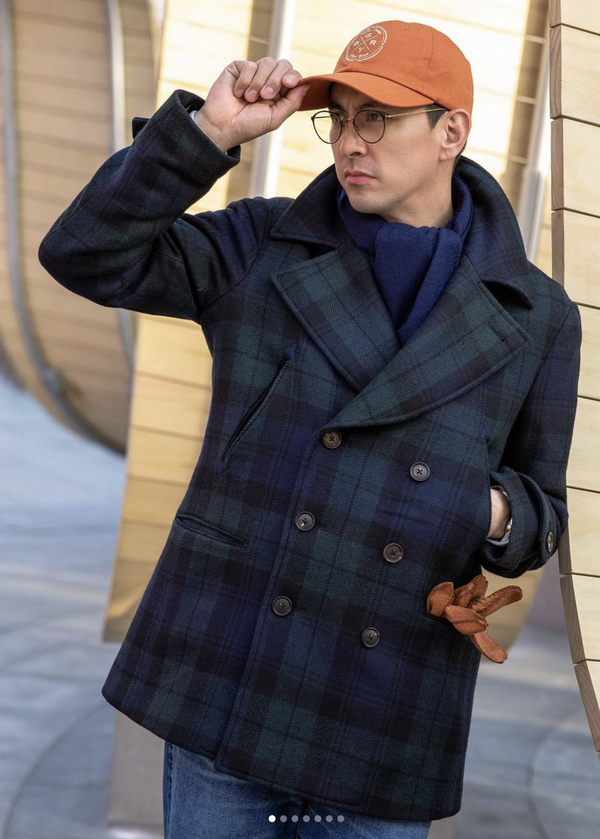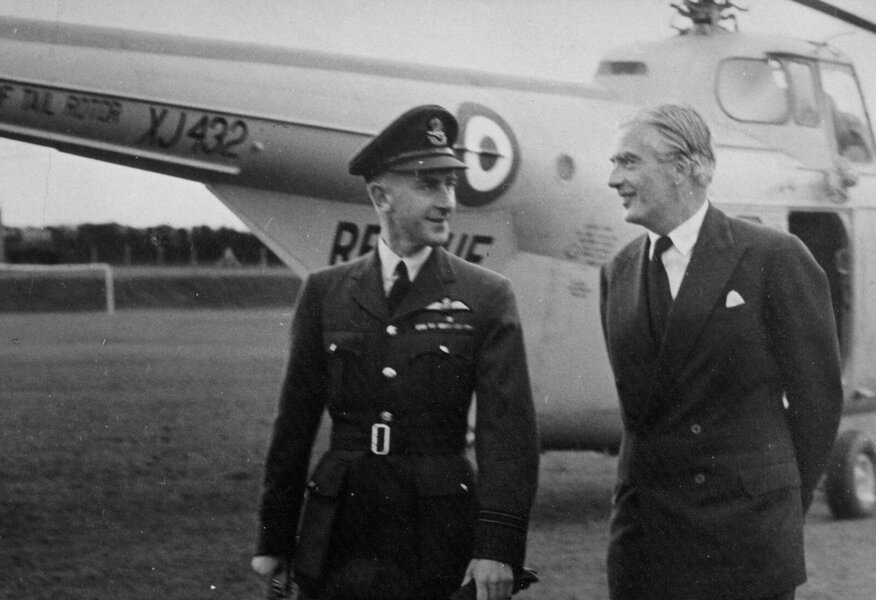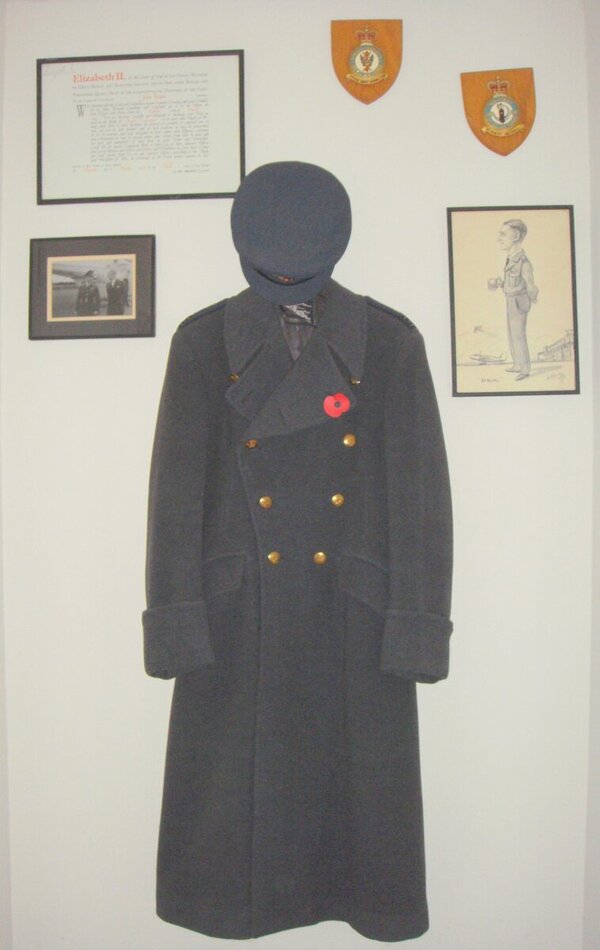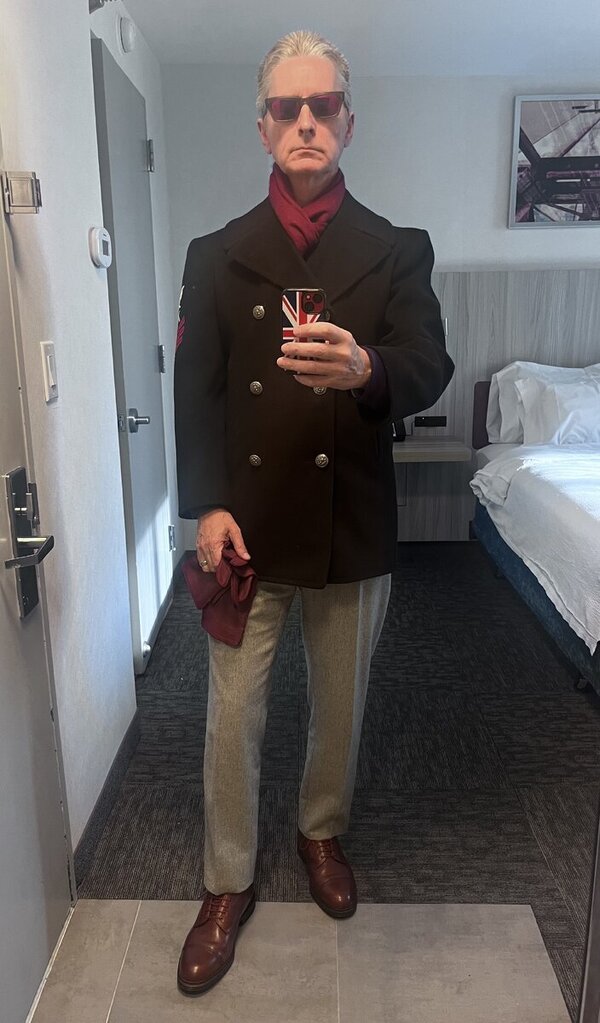Neither Fidelity nor Schott make a Mil Spec pea coat. Fidelity has never made pea coats for the Navy. Schott may have had a contract back during the war, but no one at the company knew if, when or for how long it produced pea coats under contract.
Sterlingwear contracted with the government to make pea coats for the Navy back in 1968. At that time, the name of the company was Viking. The pea coats were produced under the ViMil label, which was short for Viking Military, the branch of the company making military clothing. Both Viking and Sterlingwear have been manufacturers of quality pea coats since the first contract.
In 2019, the Navy announced the pea coat would be phased out, replaced by a parka made of synthetic materials. This was a devastating blow to Sterlingwear and East Boston, the woolen mills in the NE and the sheep farmers around the country.
The 740 pea coat that Schott is selling is an 80/20 wool blend with a melton shell. This is not nearly as nice as the vintage (1979 and before) US Navy peacoats with the 100% Kersey wool. And not as warm either.
In my article about vintage peacoats on The Fedora Lounge, I tell how to date the coats, what to look for in a peacoat and how to get your correct size when ordering online.
The link to my article is below in my signature line. Any questions? Join the Lounge and ask there in the Peacoat Thread, or ask me here. PC
I thought this old info from Schott was interesting:https://www.schottnyc.com/forum/posts/why_melton_wool_and_not_kersey_wool_on_the_pea_coat.htm
I’ve never been lucky enough to find one of the prized kersey peacoats in my size or decent enough condition. I think the schott 740 is a good compromise. Ok it’s not 100% wool but it’s still 32oz plus a padded liner, I’d probably get one if I was stateside as they often go on sale.
But it’s got me thinking, I am sure there’s enough of us interested here and on other forums to commission a fabric house to replicate the original kersey wool. Any one have any ideas where to start?






